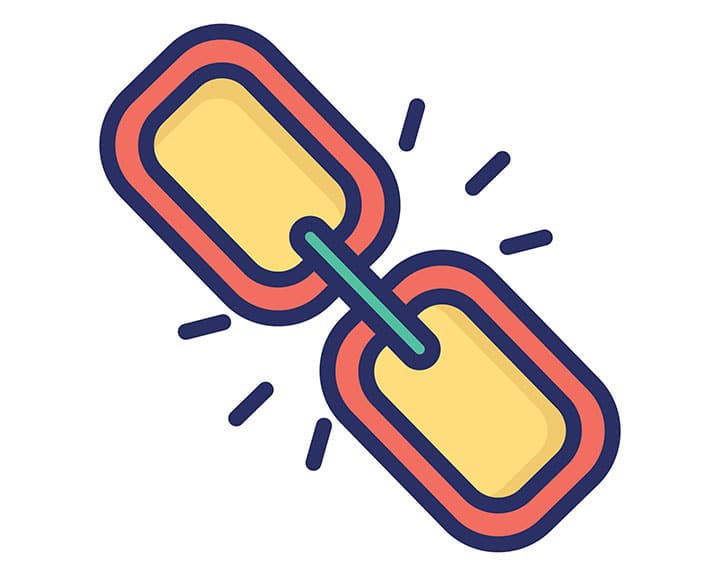Share This
On-site SEO: Internal Linking

Optimizing your website’s internal links is one of the best ways to boost your content’s visibility and generate more engagement from users. Effective internal linking helps search engines find and index your content more quickly and can boost your site’s overall ranking in search engine results pages (SERPs).
Internal links also help improve your website’s user experience by making it easier to navigate. By following internal links, users can quickly and easily jump from one page to another without manually searching for the information they need.
Let’s dig into the fundamentals of internal linking in more detail. In this article, we’ll provide an overview of how internal links work, how they affect your website’s performance, and why they are so important for search engine rankings. We’ll also provide a few tips for improving your site’s internal linking structure.

Understanding Internal Links
Internal links are hyperlinks that connect one page of a website to another page on the same website. Internal links are used to help users navigate through a website by directing them to specific pages or sections of a website, making it easier for them to find the content they’re looking for. Including internal links on your website also improves SEO by helping search engines understand the structure and content of your site.
First of all, it’s important to understand the distinction between different types of internal links. Internal links can be broken up into two main categories: structural links and contextual links.
Structural Internal Links
Structural internal links are links that are placed in the structural elements of a website, such as menus, sidebars, and footers. They provide visitors with an easy way to navigate through the different pages of a website.
Structural links also help search engines navigate and index the pages on your website. If there are no links anywhere on your website to a particular page, search engines won’t be able to find that page and display it in search engine results. Structural internal links usually point to main pages or categories within your website.
Contextual Internal Links
Contextual internal links are links that are placed within the actual content of a webpage. They direct readers toward additional or tangential information related to the topic on the page.
Similarly, search engines use contextual links to understand what each page on your site is about and to rank each page’s value. The more internal links that direct to a particular page, the more important search engines will consider that page to be, leading to higher search engine rankings. Contextual internal links usually point to other informational posts or pages on your website.
Benefits of Internal Linking for SEO
- Crawlability – Internal links allow search engine crawlers to navigate your website and find all of the pages easily. This helps ensure that all of your content is indexed by search engines, enabling it to be ranked in search engine results pages (SERPs).
- Link Equity – Link equity is the value that a link passes to the linked page, which can then be passed on to other pages through further internal linking. Internal links help distribute link equity throughout your website. This helps boost the overall ranking potential of all the pages on your website.
- Relevance – Internal links also help improve the relevance of your pages by connecting related content on your website. This makes it easier for search engines to understand what each page is about, which can lead to higher rankings in relevant user searches.

Creating the Perfect Internal Link Structure
There are a lot of factors to consider as you’re building your site’s internal linking structure. Here are a few of the most important ones:
The anchor text you choose for each link is one of the most important considerations for your site’s internal linking structure. Anchor text is the highlighted, clickable text within your content that visitors use to follow a link. Each link’s anchor text should accurately describe the page being linked to and use keywords relevant to the content on the target page. This helps search engine crawlers understand what each link is about and improves ranking for those pages.
Page hierarchy is another essential consideration. Page hierarchy is like the order in which pages link to one another on your website. Pages should be organized in a logical structure, with more general pages linking to more specific pages in order of importance. This makes it easier for users and search engines to navigate your site.
Finally, be aware that using an excessive number of internal links can actually harm your site’s SEO performance, as search engine algorithms may interpret it as an attempt to manipulate rankings. Additionally, too many internal links can easily confuse visitors and make it more difficult to navigate your website. Too many internal links can also degrade technical site performance by increasing page loading times.

Tips for Internal Linking Success
By strategically placing internal links throughout your website, you can help guide visitors toward specific pages that contain more in-depth information about a product or service. This helps increase engagement with your content and encourages visitors to take action by making it easier for them to find what they’re looking for. Linking related content together can also help keep visitors on your site longer, which increases the chances of them converting into customers.
Here are a few final tips for achieving success with your site’s internal links:
- Use descriptive anchor text – Make sure all anchor text is contextually relevant to the content on the page you’re linking to and the page you’re linking from.
- Link to old posts – When creating new content, look for opportunities to link back to older posts that are still relevant and useful for readers today. This will help boost visibility and engagement for those older posts while also providing additional value to your new post or article.
- Continually monitor your link structure – You can use one of the many SEO auditing tools available online to identify any broken links, redirects, or duplicate content that could be negatively impacting your site’s user experience or SEO performance.

Boost Your Visibility With Better Internal Linking
Effective internal linking is one of the most critical factors affecting your website’s user experience. Without an organized linking structure, your site visitors will struggle to navigate your site efficiently and may be unable to find the information they want.
Likewise, internal linking is crucial for SEO and overall website performance. Well-structured internal links enable search engines to better understand your website’s content and page hierarchy. Optimizing your site’s internal link structure is one of the best ways to boost your content’s SEO performance, leading to higher search engine rankings and greater visibility for your business.